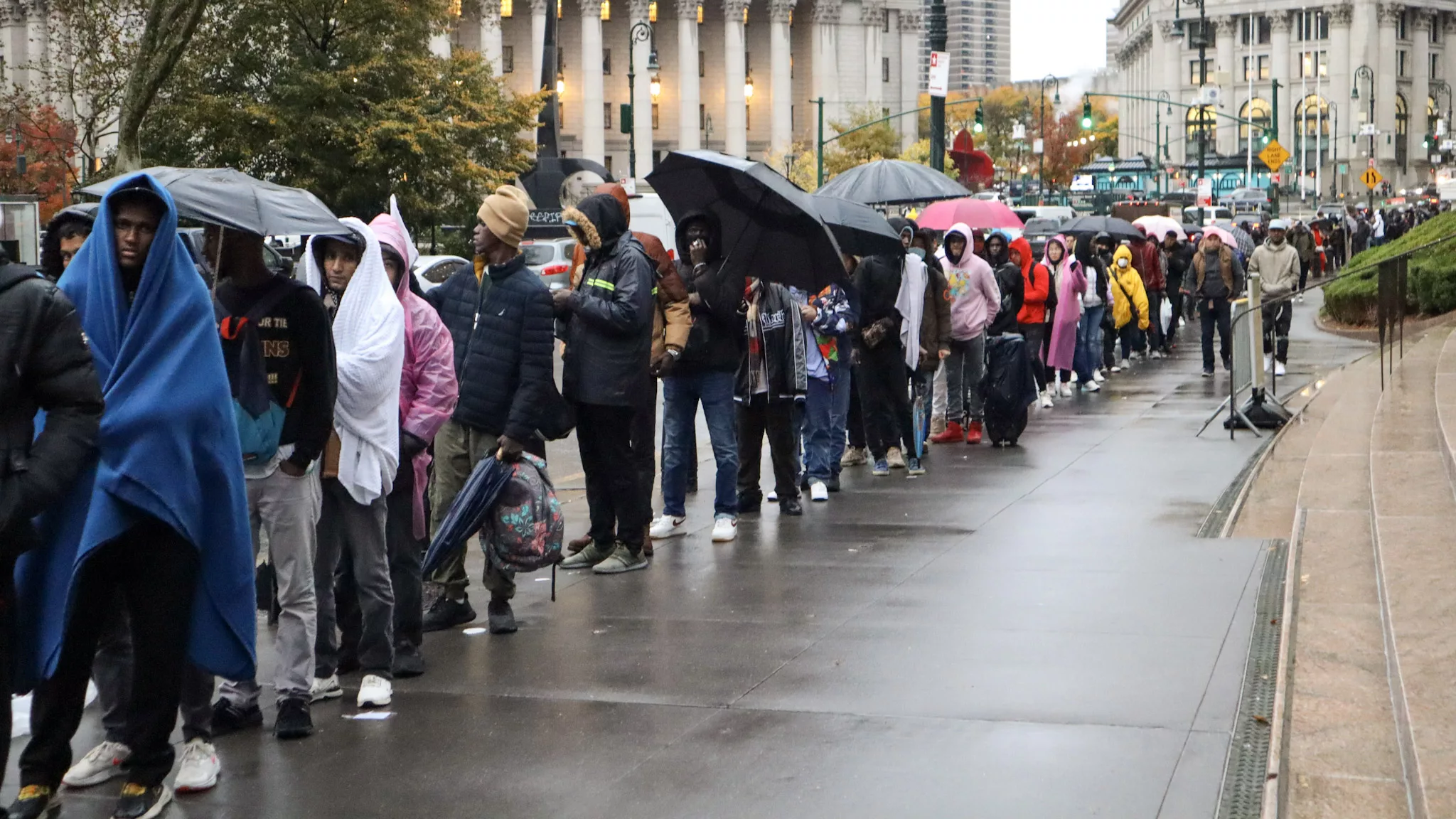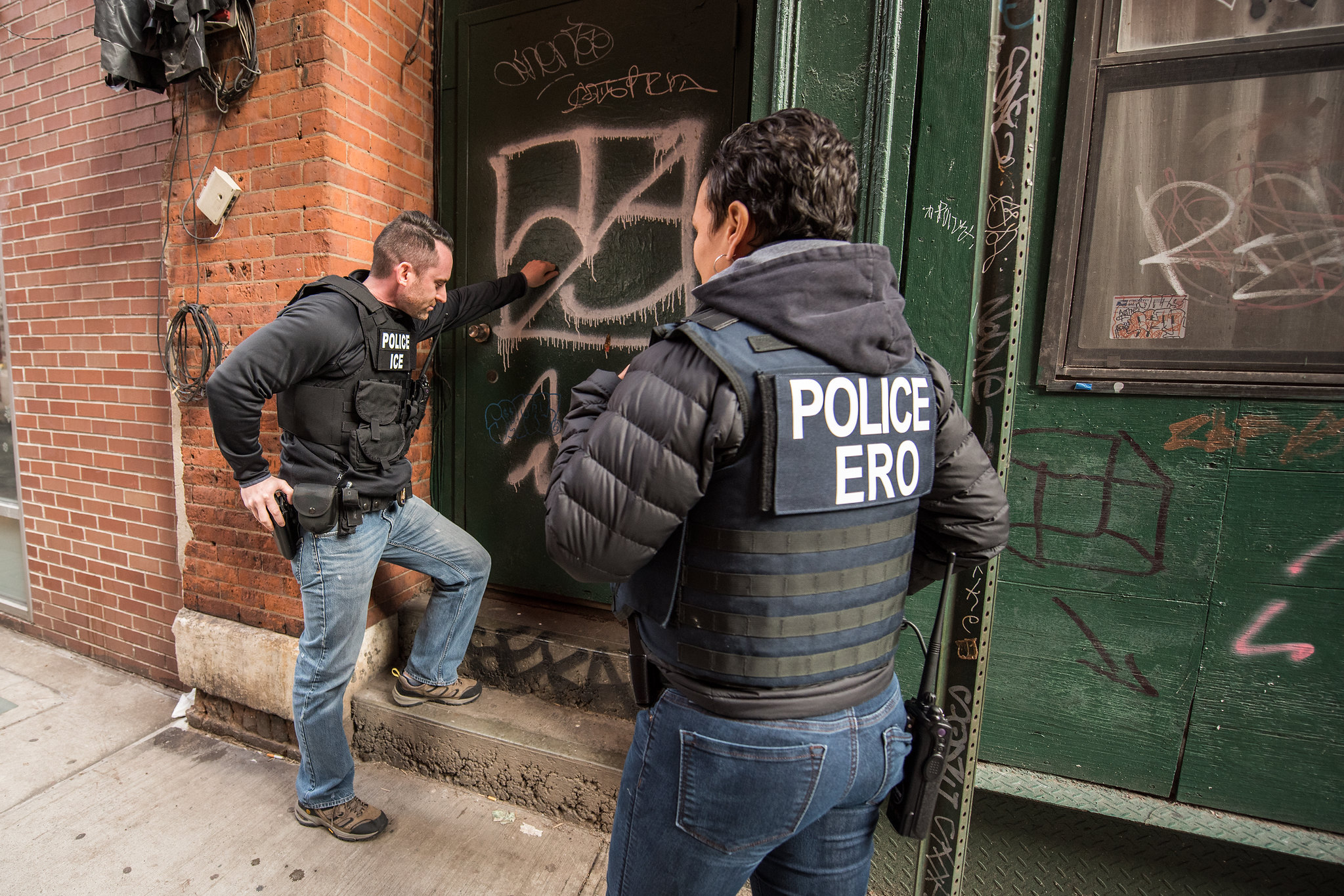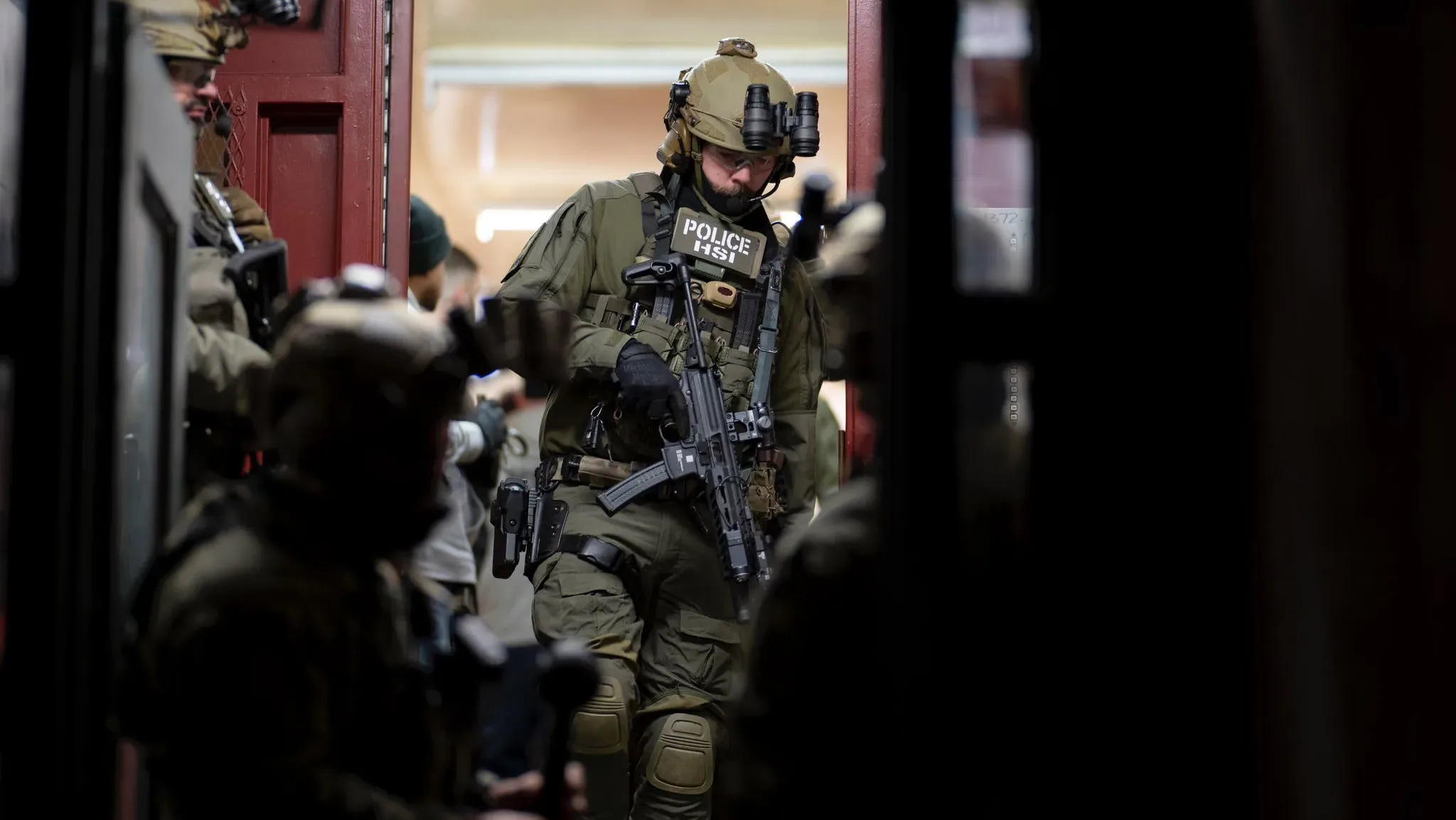When Maria Padilla Yasig crossed into the United States with her husband and three daughters, she wasn’t sure where she would live. So, she gave immigration authorities the address of a distant family friend in New York.
More than two months have passed since Padilla Yasig, 33, first came to New York from Ecuador, and her family now lives in a shelter, not at the address she provided. She changed her address recently, but she still doesn’t know if mail alerting her to appear in immigration court will be sent to her at the shelter or to her family friend’s address. This is complicated further by Mayor Eric Adams imposing limits on shelter stays, which will likely force Padilla Yasig to move throughout the city on a regular basis, making it harder to keep track of vital correspondence.
Also Read: NYC Shelter Evictions Leave Migrants in Disarray
Most immigrants who are seeking to obtain legal immigration status — including asylum — must attend hearings in front of an immigration judge, but the Executive Office of Immigration Review (EOIR) only sends out immigration court hearing notifications through the mail. If migrants like Padilla Yasig don’t receive the notification of an immigration court date, they run the risk of missing their hearing, which can enable a judge to issue them a deportation order. Immigrants become eligible for deportation, even if they weren’t aware of the hearing. Advocates say the problem is being exacerbated by City Hall policies, like the Adams’ administration’s shelter stay limits, and the shuffling of migrants throughout different city facilities.
At a recent Immigration and Customs Enforcement (ICE) check-in, Padilla Yasig requested to change her address to her shelter’s address in Long Island City. But now, Padilla Yasig said some of the shelter’s residents have been told they will have to leave the facility within 60 days. She’s waiting for the city’s notification that her family — including her daughters, ages 11, 6 and 4 — will have to move out. Then, she’ll have to ask, once again, for a change of address.
“If they send us away from here, the address is already inputted,” Padilla Yasig said in Spanish. “Sending us out of the shelter is harmful for everything.”
There has been an increase in removal orders since migrants began arriving in high numbers to New York City’s shelter system last year, according to lawyers and data from the Transactional Records Access Clearinghouse at Syracuse University (TRAC).
The absence of stable housing has compelled many migrants, like Padilla Yasig, to initially list the addresses of other friends, or family members — even distant ones — with immigration authorities. When migrants do get a chance to change their addresses to the shelters they’re in, city rules may force them to move out in a matter of a month or two.
Also Read: Hochul, Adams Want to Modify NYC Right to Shelter Law as a Response to Migrants
“It’s really arbitrary which deportation orders get executed and when,” said Jodi Ziesemer, the director of the Immigrant Protection Unit at the New York Legal Assistance Group (NYLAG). “So people are really vulnerable.”
The number of deportation orders in New York state immigration courts in fiscal year (FY) 2023, (October 2022 to September 2023), has reached the highest point ever in 25 years when the first recorded data on deportation orders was made available through TRAC.
In FY 2023, immigration judges in New York issued 24,200 deportation orders. Previously, the largest number of removal orders was in FY 2019, when judges carried out 15,566 removal orders in New York immigration courts during the height of the Trump administration, according to TRAC.
“With so many people residing in shelters, and not having fixed addresses when they’re issued the charging documents and the border, there’s just been a huge gap in people being notified of their hearings,” Ziesemer said. “The burden falls entirely on the immigrant who, again, is not familiar with our system.”
City rules may interfere with court notices
In July, Mayor Adams said single adults would soon begin to receive notices that they would have to leave the shelter they were currently living in within 60 days from when they got the notice. In September, Mayor Adams said he was cutting that stay to 30-days. In mid-October, Mayor Adams announced the city was also limiting family stays in their shelters to 60 days. City Hall said migrants would be able to return to intake and move to a different shelter, if needed.
In response, various immigration advocates and elected officials have condemned the new rules, which they said will lead to more migrants sleeping on the street. But the Adams administration has said they have little choice as the city continues to spend projected billions on asylum-seeker related costs, and has no more additional space to house migrants. More than 136,000 migrants have come through the city’s intake since last spring, and more than 65,000 are still in city care, according to City Hall.
At a City Council hearing about legal assistance for asylum seekers on Oct. 18, the Chair of the Committee on Immigration, City Council member Shahana Hanif, questioned how the city would support migrants who had to leave after their 30 and 60-day limits at shelters, and would have to change their addresses with immigration authorities.
Masha Gindler, the executive director for the Asylum Application Help Center, responded that the Help Center assists asylum seekers with change of address and venue forms, and counsels them on how to adjust their address in the future. But she acknowledged the limits of physical mail.
“If it was possible for us to file these online, where people can receive their notices through email — the way most of us tend to communicate these days — a lot of these problems would go away,” Gindler said at the hearing. She added that mail is only held for 30 days at the city’s emergency shelter sites, and that the office was seeking legal ways to guarantee federal mail would reach migrants.
Also Read: Immigrants See No Clear Path Outside 26 Federal Plaza
At NYLAG, most clients currently fighting in-absentia deportation cases are recently arrived migrants, many of whom are staying in shelters. Once an immigrant has an in-absentia deportation order, they must prove it was not their direct fault if they did not receive the notice. They must do this within a statutory deadline in order to reopen their immigration court case.
In an October report from NYLAG and Make the Road New York, which was shared with Documented, the organizations said that between September 2022 and September 2023, they fought deportation orders filed against 64 clients who missed their hearings, primarily at New York City immigration courts.
According to NYLAG and Make the Road, “government errors” and “overenforcement” led immigrants to miss their hearings, resulting in deportation orders, the report said. Incidents like guards barring immigrants from entering the building to attend their hearings, EOIR and DHS issuing “flawed” court notices, and ICE officers giving out “incorrect and confusing information about hearing dates,” led to deportation orders being issued.
Sometimes, clients were never notified of their court cases at all. “In some instances, the United States Postal Service returned the mailed hearing notices to the court as undeliverable, yet the court ordered the respondent removed regardless,” the report said.
While EOIR granted 88% of the legal organizations’ requests to reopen their clients’ immigration cases as of October 16, these numbers only reflect the portion of immigrants who could access legal assistance to reopen their immigration cases through these organizations. “For people who are trying to do this on their own, without an attorney, it can be almost impossible,” Ziesemer said.
City Hall did not respond to a request for comment. Kathryn Mattingly, a press secretary for EOIR, said that the agency has various resources for immigrants navigating court proceedings. These include “self-help materials, Immigration Court Helpdesks where unrepresented respondents can seek assistance, and the Immigration Court Online Resource (ICOR) which provides general information on what will happen during court hearings and how noncitizens can prepare for their hearing,” she said.
Mattingly said that immigrants who have scheduled hearings at 26 Federal Plaza “are not being turned away, though the lines to enter the building can get lengthy,” and immigration judges are aware of the situation, and “remain cognizant of it when conducting hearings.”
Migrants struggle to find stable addresses
Outside 26 Federal Plaza on Monday, the building which houses both the ICE offices and New York’s busiest immigration court, approximately 300 people circled the block shortly after 7 a.m. Most were wearing raincoats and holding umbrellas as the rain tapered off while they waited for their check-ins with ICE.
Also Read: Migrants Struggle to Find Lawyers to Meet One Year Deadline to File for Asylum
Standing in the immigration court line, Malena Alvarez, 40, held paperwork given to her at the U.S-Mexico border that listed an Oct. 30 court date. It was her first time at 26 Federal Plaza since arriving in New York about three months ago with her partner and two children, she said. The family currently lives at a shelter in Queens — an address she said had not yet been updated with immigration authorities. Instead, she believed the address on her file was an acquaintance’s home that they had initially arranged to stay with.
But as her plans changed, her family ended up in a shelter. Now, she was unsure if she and her family had received federal mail at the address of the acquaintance. No one at the shelter had explained how the court process worked, she said. And standing outside 26 Federal Plaza, she was nervous for what was to come inside the courtroom. “It’s scary,” Alvarez, from Ecuador, said in Spanish. She gestured at the guards speaking English. “I don’t understand what they’re telling me.”
Ahmed Abdalla Mouloud arrived in New York about a week ago, he said in Arabic through a translation application. For now, Abdalla Mouloud was staying at the 455 Jefferson Street shelter in Bushwick, but he said he already received a notification that he will have to leave within one month.
“It makes me feel frustrated, afraid and humiliated,” Abdalla Mouloud, who is from the disputed territory Western Sahara, wrote in a WhatsApp message about having to leave the Brooklyn shelter. He’s also chosen to give immigration authorities the address of his friend, who, like Padilla Yasig and Alvarez, hopes will tell him when he receives notices from the immigration court.
Also Read: How to Change Your Address with Immigration Agencies














